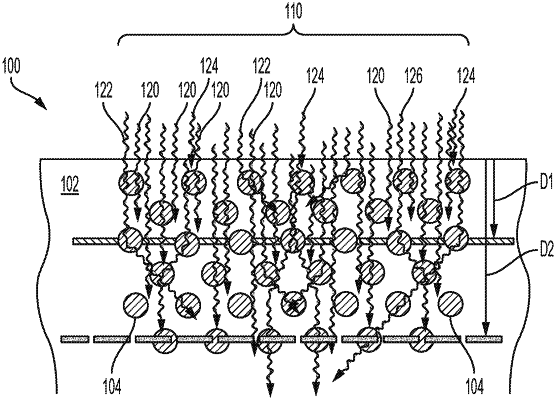| CPC B29C 64/165 (2017.08) [B33Y 10/00 (2014.12); B33Y 70/10 (2020.01); B33Y 80/00 (2014.12); C08F 2/08 (2013.01); C08F 2/46 (2013.01); C08F 22/1006 (2020.02); C08K 3/08 (2013.01); C08K 3/22 (2013.01); G21C 3/50 (2013.01); C08K 2003/0856 (2013.01); C08K 2201/003 (2013.01)] | 14 Claims |

|
1. A method for manufacturing a component of a nuclear reactor system, the method comprising:
using an additive manufacturing protocol with a nuclear fuel slurry to manufacture a green body of a component of a nuclear reactor system,
wherein the nuclear fuel slurry has a composition comprising (in vol. % relative to total volume of the slurry):
a plurality of first particles 30 vol. % to 40 vol. %;
a plurality of second particles 10 vol. % to 20 vol. %;
a dispersant >0 vol. % to 5 vol. %;
a photoabsorber greater than 0 vol. %;
a photoinitiator greater than 0 vol. %; and
at least one monomer resin 25 vol. % to <45 vol. % as a balance,
wherein a total amount of plurality of first particles and plurality of second particles is maximum 60 vol. %,
wherein the first particles have a composition including a uranium-containing material,
wherein the second particles have an absorbance for wavelengths of 300 nm to 700 nm that is equal to or greater than 0 Au and is less 1.0 Au, and
wherein the photoabsorber, and photoinitiator operate within an incident wavelength of 300 nm to 700 nm.
|